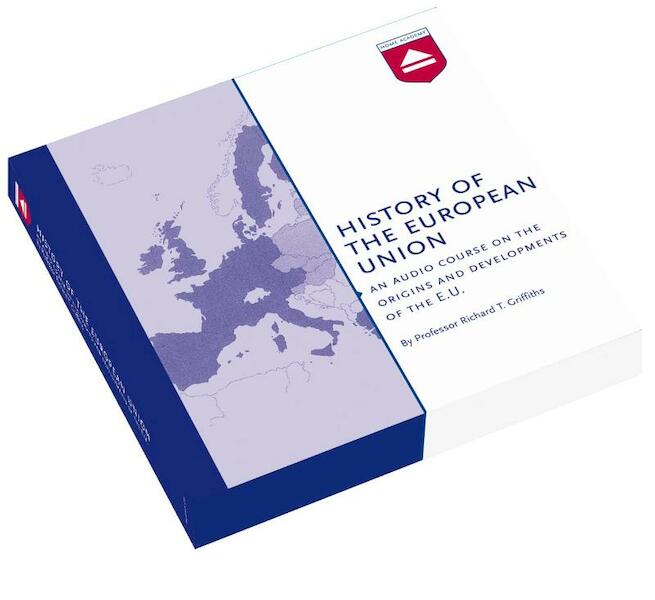| Prijs | € 34,95 |
Uitverkocht
Luisterboek | Juli 2005 |
Beoordeel dit boek als eerste!Beschrijving
Specificaties
- Auteur
- R.T. Griffiths
- Uitgever
- Home Academy Publishers B.V.
- ISBN
- 9789085300076
- Bindwijze
- Luisterboek
- Publicatiedatum
- Juli 2005
- Categorie
- Algemeen
- Taal
- Engelstalig
Beschrijving
The history of today's European Union (EU) begins in May 1950 when the French foreign minister Robert Schuman offered to pool his country's coal and steel resources with those of France's enemy, Germany, under the control of a single supranational authority. A year later the governments of France, Germany, Italy and the Benelux countries signed the Treaty of Paris establishing the European Coal and Steel Community. Hereby, they relinquished their national sovereignty over heavy industry. Since then, the Community has been in constant movement; ebbing and flowing, but never still. Its subsequent development has often been described in two terms - widening and deepening. These are often juxtaposed, but unnecessarily so. By widening is meant expanding the geographical scope of the Community by accepting new member states. By deepening is meant the assumption by the Community of new tasks of the acquisition by Community institutions of greater responsibility in executing the tasks that it already has.
These lectures explain the underlying reasons behind the main developments of the insitutional architecture of the EU. To explain the milestones in that history it addresses three related questions:
the form: why was supranationality chosen?
the timing: why did events occur when they did?
the competencies: why were new policy areas chosen?
To answer these questions we eschew the clutter of day-to-day politics and negotiations and turn to deeper structural causes. The result is a history that is richer and intellectually more satisfying than much of the more elegiac literature of the European Union that passes for history.
Published in cooperation with Studium Generale Leiden University
Inhoudsopgave
CD 1: (apr. 60 minutes)
Chapter 1: The First Supranational Community: The European Coal and Steel Community
Chapter 2: A Missed Chance: The European Defence Community
CD 2: (apr. 60 minutes)
Chapter 3: The Creation of the European Economic Community: The Rome Treaties
Chapter 4: Reactive Nationalism? De Gaulle and Europe
CD 3: (apr. 60 minutes)
Chapter 5: Reactive Nationalism? The British Membership Problem
Chapter 6: 1992. The Completion of the Internal Market
CD 4: (apr. 60 minutes)
Chapter 7: The European Union. Economic and Monetary Union
Chapter 8: A Family of Twenty-five. EU Enlargement
Over de spreker
Professor dr. Richard T. Griffiths (1948) obtained his BSc(Econ) in Economic History and Russian Studies from University College Swansea (1970) and his PhD in History from Cambridge University (1977).
Schrijf een recensie
Specificaties
- Auteur
- R.T. Griffiths
- Uitgever
- Home Academy Publishers B.V.
- ISBN
- 9789085300076
- Bindwijze
- Luisterboek
- Publicatiedatum
- Juli 2005
- Categorie
- Algemeen
- Taal
- Engelstalig











